How to make tomatoes turn red faster
Tomatoes picked from the bush are sweeter, more aromatic and tastier than those that were picked green and ripened at home. It has been scientifically proven that tomatoes ripened on the branch contain more vitamins and biologically active substances, in particular lycopene and carotene, than those that were picked green and ripened at home.
However, in the central zone and northern regions of Russia, it is not easy to achieve ripening of the crop on the bushes, since tomatoes require a lot of sun and heat, which are often not enough. As a result, gardeners are missing out on a good half of their harvest. Many summer residents can preserve green tomatoes; some simply pick off unripe fruits and leave them to ripen at home. How to get the tomato crop to ripen on the bushes? Read about it in our article.
Tomato varieties
First of all, you need to take the choice of tomato variety seriously.
First of all, you should know that tomato varieties are divided into:
- ultra-early ripening (75-85 days);
- early (90-95 days);
- mid-early tomatoes (100-103 days);
- mid-season (100-115 days);
- late (120-130 days).
If you grow these plants in Siberia or the Urals in open ground, you should choose ultra-early varieties - Aurora F1, Alaska, Far North, Ultra-early, etc., early - Evgenia, Alpha, Gavrosh, Arctic, etc., mid-early - Niagara, Scarlet candles and mid-season - Biysk Rose, Golden Queen, Nezhdana.
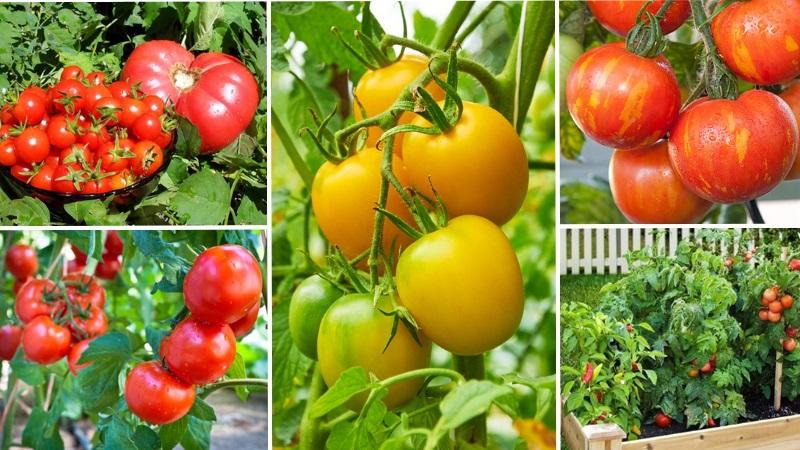
Of course, in the conditions of the North, the Urals and Siberia, the most suitable way to grow tomatoes is in greenhouses or film shelters, since the tomato is a heat-loving crop and, as a rule, develops slowly in cool spring and June weather.
By the beginning of August, when many gardeners' tomatoes are just beginning to bear fruit, they are destroyed by cold and late blight. Tomatoes, in order to have time to fully “give” the harvest, need 4-5 months with warm nights (15-18°C).
Remember. Sudden temperature changes can delay plant development and fruit ripening for a long time.
Immediately after disembarkation in open ground it is necessary to stimulate the plant to rapid growth and full development. The faster the ovaries appear on the bushes, the faster the ripening process of tomatoes will begin.
What not to do while tomatoes are ripening
During this period you cannot:
- generously water, especially when it’s cloudy and damp outside;
- feed with nitrogen-containing fertilizers, including organic ones (mullein, chicken droppings, infusion of green mass);
- exceed the dose of fertilizers.
Also, seedlings should not be planted in unheated soil.
Read also:
The best varieties of tomatoes for the greenhouse, resistant to late blight.
Top 15 sweetest varieties of tomatoes for greenhouses.
A bright variety with a rich harvest and rich taste is the Eldorado tomato.
How to make tomatoes ripen faster
In order for tomatoes to ripen faster, they need to create appropriate conditions, and for this you need to know the physiology of the development of the tomato fruit. It is known that after the formation of the ovary, the fruits grow for approximately 1 month, then ripening occurs within 15-20 days.
As a rule, ripening after the start of flowering lasts 40-55 days, depending on the variety.
There are many reasons why tomatoes slow down in ripening. Here are some of them: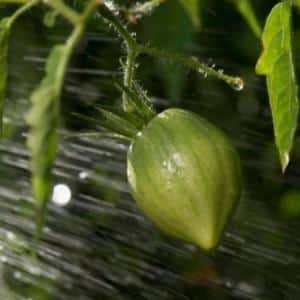
- average air temperature is less than 15 degrees Celsius;
- the average air temperature is more than 35 degrees Celsius. With prolonged exposure to such temperatures, gradual drying out and falling of the foliage is possible. Tomato fruits stop ripening;
- lack of lighting (tomatoes are a light-loving crop);
- excess or deficiency of necessary substances. Thus, with an excess of nitrogen, tomatoes begin to actively develop leaf mass, so the fruits begin to lag behind in development. With a lack of potassium, the foliage becomes deformed and changes color, and with a prolonged deficiency, the leaves and stems begin to dry out, as a result, the ripening of tomatoes is delayed. Lack of phosphorus reduces the rate of fruit development.
If your tomatoes started to bud, but after 50 days they still haven’t ripened, then something is wrong, and you need to urgently take measures to speed up ripening.
Acceleration of maturation
By providing the tomatoes with comfortable conditions, you will receive ripe tomatoes not only on time, but also earlier.
Increased lighting
With a lack of light, which can be caused by excessively dense plantings, the fruits ripen slowly and unevenly. In order for the bushes to receive more light, they must be tied to supports. When shading bushes, the lower foliage should be removed to ensure sufficient lighting of the fruits.
You can create additional lighting in the greenhouse if daylight hours are too short.
Good lighting is ensured by a well-chosen planting scheme. The distances between seedlings depend on the tallness of the plants and growing conditions.
Removing new flower stalks
 At the end of August, new flowers and buds are still forming on tomato bushes, but they will not have time to ripen, but they can slow down the growth and ripening of existing fruits, robbing the plant of nutrients. Therefore, unpromising flowers and buds must be removed when they appear.
At the end of August, new flowers and buds are still forming on tomato bushes, but they will not have time to ripen, but they can slow down the growth and ripening of existing fruits, robbing the plant of nutrients. Therefore, unpromising flowers and buds must be removed when they appear.
Removing stepchildren
Removing stepchildren or pinching is an agrotechnical technique for removing side shoots (stepchildren) growing from the leaf axils in the above-ground part of the main stem, which gives a positive result only if carried out in a timely and regular manner.
Pinching is very effective because it increases the flow of nutrients to the generative organs of plants and shoots that are lagging behind in development.
Carefully. You cannot delete all stepchildren at the same time. If you cut off 60-70% of the green mass, all the moisture intended for the stepsons will begin to accumulate in the fruits, which can lead to plant disease and fruit rupture.
Picking leaves
Mandatory pruning is required for the lower leaves that are in contact with the foliage or stem of a neighboring plant. This is necessary to improve ventilation and prevent the spread of diseases.
After the fruits form on the first cluster from below, all lower leaves under it should be removed, because contact of the foliage with the ground provokes infection with fungal diseases.
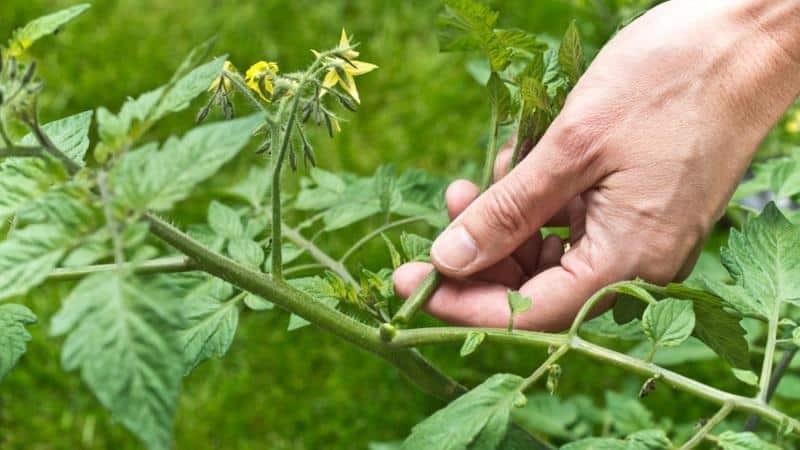 The lower leaves of a mature plant need to be plucked off so that the trunk is bare in the lower part at a distance of 25-30 cm from the ground.
The lower leaves of a mature plant need to be plucked off so that the trunk is bare in the lower part at a distance of 25-30 cm from the ground.
Fruits exposed to sunlight ripen much faster and have a refined aroma and sweet taste.
Carry out pruning on a dry, sunny day in the morning so that the cut area dries quickly.
Pinching the tops

Another effective method of accelerating fruit ripening is pinching (removing, pruning) the upper part of the plant, the so-called growing point.
Pinching is carried out after the plant has formed 5-7 clusters with fruits, then 3 leaves are counted above the uppermost cluster with ovaries and the upper bud is removed.
There is an opinion that pinching the tops of bushes during the ripening period is a mistake. Indeed, after pinching, all the juices of the plant go to the development of the fruit, but at the same time, the moisture that was intended for the growth of the top is directed into the fruit, which leads to their cracking. This happens at night when the temperature drops.
Advice. Pinch back at the end of July when the tomatoes are entering the milk stage. Use only disinfected sharp scissors or pruning shears to avoid infection.
Feeding
The optimal frequency of feeding tomatoes is every two weeks. With a lack of nitrogen, fruit cracking occurs. However, its excess leads to their absence altogether. Nitrogen is added to the soil during the growth of the bush and roots, and potassium and phosphorus during flowering and fruit formation.
Fertilizing can be root (regular fertilizing, when fertilizer enters the soil and is absorbed by the roots) and foliar (when leaves and stems are sprayed with fertilizer). Root feeding is a priority, since the main dose of fertilizer is always applied through the soil. Next we will tell you what to water.
Root feeding
An effective ancient remedy is an aqueous solution of ash. It is prepared as follows: 1 glass of ash is poured into a bucket of water (10 l) and stirred. Plants are watered with the solution immediately without infusion, at the root. One plant requires approximately 1 liter of solution.
Important. You can feed tomatoes with ash solution only after preliminary watering. Otherwise, the roots will get burned.
To accelerate ripening and improve taste, root fertilizing with potassium humate is used. To do this, 10 g of potassium humate is dissolved in 200 liters of water. First, the powder is diluted in 2 liters of hot water, stirred thoroughly and left for a couple of hours. Then this working solution is poured into a barrel and watered strictly at the root. You can water tomatoes with humate every 10 days.
During the period of mass ripening of fruits, fertilizing with phosphates is popular. Phosphates are poorly soluble in water, so a superphosphate extract is used. Granulated superphosphate (100 g per 1.5 l) is poured with boiling water, mixed well and left for 24 hours in a dark place.
During this time, the mixture must be thoroughly mixed 3-4 times so that all granules dissolve. The hood is then carefully drained. Now you need to take 170 ml of the extract and dilute it in a bucket of water (10 l). Watering is carried out at the rate of 1 liter for each root.
Foliar feeding
Foliar feeding is considered additional, but there are situations when you cannot do without it. It is foliar feeding that can save plants in case of disease, drought, cold weather, when the roots of the plant are not working well. Proper spraying of plants with nutrient solutions always gives excellent results.
Foliar feeding works quite quickly. But a one-time procedure will not be enough; at least 2-3 procedures are required within a month.
Foliar feeding of plants during the ripening period can be done with an infusion of superphosphate. Double superphosphate is poured with hot water (100 g per 1 l).Infuse the solution for 3-4 hours, filter, dilute in 10 liters of water and spray.
Recently it has become popular to spray tomato plants with iodine solution. Experienced gardeners advise carrying out 1-2 foliar iodine fertilizing per month (at the rate of 30-40 drops per 10 liters of water). For ten square meters of area, 1.5 liters of composition are consumed. You can also treat plants with a milky solution of iodine. To do this, dilute 5 drops of medical iodine in 250 ml of low-fat milk and add 1 liter of warm water.
Strictly follow the dosage of iodine, otherwise you may burn the leaves of the plant. In addition, tomatoes are able to absorb iodine compounds from the environment.
Remember. Excess iodine can lead to deformation of the fruits and clusters of the plant.
How else to speed up the ripening of tomatoes
What can you do to make tomatoes turn red faster on bushes in open ground? In addition to the above, there are a number of other methods based on food restriction (fasting, overlapping, cutting off roots) and the use of chemicals (ethylene, injections with ethyl alcohol, etc.).
The methods listed below are suitable for tomatoes grown both in a greenhouse and in open ground.
Starvation
From mid-July, tomatoes stop watering and feeding in any form. Moreover, a temporary film cover is made over the beds so that moisture from rain and dew does not reach the roots.
Overlap
This method blocks the outflow of photosynthesis products to the roots. Most of all nutrients begin to flow to the fruits, which accelerates their ripening.
Performed in two ways:
- tug. Using a thin wire of any material, the trunk is carefully pulled at a level no higher than 14 cm from the ground surface.They try to pull the stem, but not cut it through;
- incision The stem is cut with a sharp knife right in the center at a height of 6 cm from the ground level. The length of the cut is about 7 cm. A match, a wooden sliver, and a toothpick are inserted inside.
It is advisable to pre-treat all tools and materials with any antiseptic. The procedure is traumatic - pathogenic bacteria can get into the wound. Then the bush will not bear fruit, but will begin to fight the infection.
Pulling off roots
To do this, carefully grasp the stem almost at soil level with both hands. Then carefully pull up. As soon as you hear the characteristic clicks of the roots coming off, stop pulling.
You can trim small roots with a shovel, sticking it as close to the trunk as possible.
Ethylene
 The method is based on the ability of ripe fruits to emit ethylene gas, which causes accelerated ripening of the fruit. For this method you will need a piece of banana peel, half an apple or a small ripe tomato.
The method is based on the ability of ripe fruits to emit ethylene gas, which causes accelerated ripening of the fruit. For this method you will need a piece of banana peel, half an apple or a small ripe tomato.
Place all this in a thick plastic bag and put it on the largest, but not yet ripe, bunch of tomatoes. Next, the bag must be tightly tied and left for 3 days.
After this time, the bag is completely removed and transferred to another hand. After this procedure, tomatoes begin to turn brown within 5-6 days.
Attention! Do not forget to change the “filling” as signs of mold or rot appear.
Injections with ethyl alcohol
Alcohol (96% ethyl alcohol - 0.25 ml, vodka - 0.5 ml) is injected into each green tomato through a thin insulin needle with a syringe.
According to numerous reviews from amateur gardeners, the method works perfectly. Tomatoes begin to ripen 20 days earlier than usual.
What to do to make picked tomatoes turn red faster
Most of our country is in the zone of risky agriculture. Warm-loving crops rarely produce a full harvest of ripe fruits. Low temperatures harm fruits, causing them to rot.
If the night temperature in the open ground approaches +5°C, then it’s time to remove all green tomatoes. In the greenhouse the temperature limit is higher: +9°C.
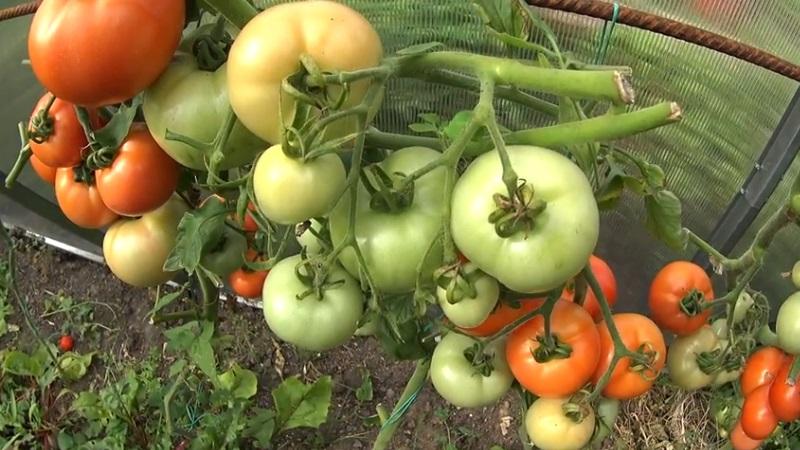
It is advisable to harvest the fruits in the morning, before the tomatoes get hot in the sun. It is better to cut them with scissors, leaving the stalks. Tomatoes ripen better with stalks. Tomatoes must be dry, without drops of dew.
Where to put green picked tomatoes to make them pour faster? Warm, dry rooms are suitable for this. The optimal temperature for ripening is from +13 to 15°C, humidity is at 80%.
Attention. The higher the temperature, the faster the tomatoes will ripen, but their quality will deteriorate, as they will lose a lot of water and will no longer be elastic.
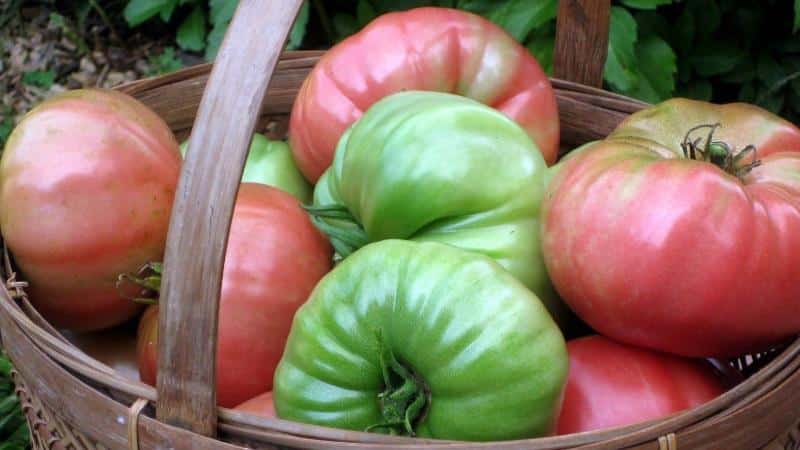 Selected medium and large-sized tomatoes are laid out in 2-3 layers in containers, for example, in boxes or baskets. To prevent condensation, they are covered with soft paper or sprinkled with sawdust.
Selected medium and large-sized tomatoes are laid out in 2-3 layers in containers, for example, in boxes or baskets. To prevent condensation, they are covered with soft paper or sprinkled with sawdust.
It is known that tomatoes ripen well in the presence of ethylene gas, which is emitted by all ripe vegetables and fruits. To ripen tomatoes faster you can:
- add a few completely reddened tomatoes to them;
- add a couple of ripe bananas or red apples to the green tomatoes.
Be sure to periodically sort through the fruits, removing spoiled ones.
For better ripening, some gardeners dig up tomato bushes with a lump of earth and hang them upside down in a warm barn or other suitable room.This method allows small tomatoes to gain weight and become larger.
 If there are a large number of bushes, they are cut off at the root and stacked. They need to be placed with their tops towards the center. The height of the stack should be no more than 60 cm. The stack should be insulated with straw mats.
If there are a large number of bushes, they are cut off at the root and stacked. They need to be placed with their tops towards the center. The height of the stack should be no more than 60 cm. The stack should be insulated with straw mats.
The stack is inspected every few days.
Green tomatoes collected from diseased bushes are placed in a plastic box with holes - for example, for fruit - and poured with hot water at a temperature of about 60 ° C for several minutes, dried and left to ripen.
They need to be checked daily, removing sick ones.
Conclusion
So, you are convinced that tomatoes are capricious and heat-loving plants that require constant care and attention. It is important to carry out all agricultural activities in a timely and correct manner. There are many methods for accelerating the ripening of tomatoes - choose according to your taste! When trying out a new method, do not apply it to all plants at once, start with a few bushes.
The video will tell you more clearly about ways to speed up the ripening of tomatoes: